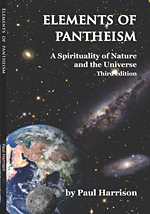If you are wondering what local groups do, or thinking of starting a group and looking for ideas, this page provides some suggestions based on the experience of our existing groups in the US and UK.
Themes
It’s important for regular meetings to have ideas for what your group is going to do and discuss, and what format it will take. Listen to and be responsive to the interests and wishes of people who attend, unless they clearly conflict with the whole purpose of the group. And here are some suggestions.
Meeting Formats
It helps to have a standard meeting format that is spiritually satisfying, allowing for social and intellectual exchanges as well as sensory and emotional experiences. You may wish to modify the format in the light of rgular members’ wishes and suggestions. Bear in mind that you will be wanting to engage the widest possible range of members so beware of biases such as getting too deeply into florid ritual – and also of turning into a dry debating club without any emotional, personal or aesthetic content. Either of these extremes can reduce your broader appeal. You may wish to hold the meetings at a member’s home, or in a room of the building where your congregation holds it services. Here is a format that has worked well at the Conejo Valley Nature Reverence Group, in Thousand Oaks, California.
Music and decor
If you are in a locale that permits this, as people arrive a CD is playing of natural sounds – it might be birdsong, whalesong, frog chorus, running water, ocean waves, thunderstorm. There are many CDs available with this kind of music. At the center of the meeting circle there may be various natural objects – beautiful rocks, tree bark, seeds, flowers, candles.
Spiritual Checkin
We begin with the checkin. Instead of talking generally about what’s been happening in our lives, we focus on deeper experiences, discoveries and insights we have had since we last met, whether of life, nature, science, or ethics. Some people use this opportunity for “Show and Tell” and bring in photographs they have taken, stimulating articles they have read, or some natural item they have collected – a rock, a flower, a seed. But please observe all rules about collecting – don’t take native flowers, seeds or shells unless they are very common.
Discussion topic
To save floundering around it may be a good idea to have a discussion topic for each session – a subject or a book. A good basis for this would be Elements of Pantheism by Paul Harrison – the only comprehensive but short and accessible introduction to pantheism/nature reverence in print. You could work through the book chapter by chapter. Other books that can be used as the basis for a subsequent “course” are The Circle of Simplicity by Cecile Andrews, which examines practical green lifestyles. Or try Ursula Goodenough’s The Sacred Depths of Nature, which gives a brief stage-by-stage presentation of science’s picture of evolution with some spiritual reflections .
Questions and Answers
If there are newcomers you might want to allow five or ten minutes for a very brief summary of what pantheism/nature-reverence is and involves, and a chance for them to ask questions. You might find the Pantheist FAQS and the World Pantheist Movement FAQS useful background.
Guided meditation
At some meetings we set aside a time of five minutes or so when members can reflect to natural sounds, or guided by words about our roots in and connections with cosmos, sun, fire, air, rocks, soil, water, life and other central features of the natural universe.
Choice of next topic, outings, suggestions for development
You might want to choose the topic for the next meeting at the end of each meeting and discuss possible outings and actions to publicize your group or attract new members.
Activities
It’s also a good idea not just to sit there talking every time, but to spice up the year with outings and activities. Hikes You might want to plan nature hikes, taking care to offer easy and moderate hikes so as to maximize participation.
Nature watch
Arrange outings to observe special events in nature – meteor showers, full moons, auroras, migrations of birds, butterflies, animals, turtles, seasonal blossomings and autumn leaf displays.
Site outings
Members may be interested in visits to science and nature exhibits, botanical gardens, green buildings, recycling centers, water and sewage plants, composting facilities.
Green Action
Once you have got started, your group may want to get involved in the practical side of pantheism/nature-reverence. You may want to talk about practical changes you can undertake to make your own life more sustainable – at home, in the garden, at work, in transport and travel. You can use the World Pantheism “Greenup your life” page as a source of practical local links for any location in the USA. You may want to join in volunteering for some local environmental project such as creating a communal garden, restoring damaged habitats, or planting native species.

